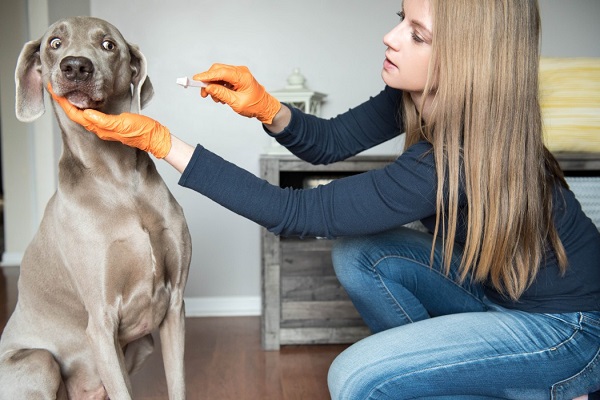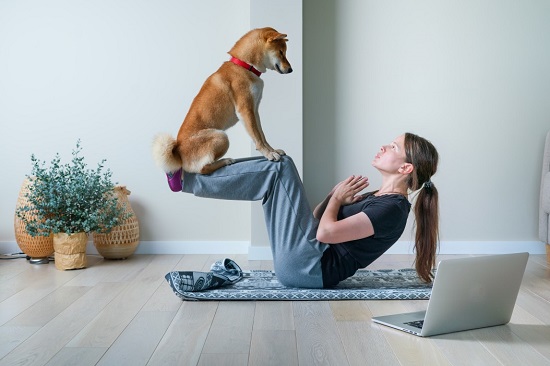Pet accidents are not unheard of. Does your dog have a wound? Minor wounds are treated at home. However, for serious cases, you have to visit the vet hospital. Some preliminary first aid can be helpful before taking him to the vet. Dogs are active beings. Hence, sporadically experience cuts, erosions, or other minor wounds.
Dogs have more of these occurrences. However, more irrepressible than their feline counterparts. As accident happens to dogs due for this reason, as a dog parent, you should be aware of how to clean and treat the scarps and cuts at home carefully. You should know the time for attending the vet.
Here’s a guide to deciding when to visit the vet. Moreover, you will know the requirement and procedures for first aid at home to tackle minor injuries.
Injuries that can be treated at home?
Not all types of injury require a vet for treatment. Many minor injuries and scratches are treated at home by cleaning with soap, water, and application of some triple antibiotic cream. If they are not in pain, home treatment can be administered at home.
Be careful about cleaning the wound. Apply the cream twice daily to prevent it from getting infected. If a discharge occurs in the wounded area or your dog is in pain, it’s time to visit a vet. They may prescribe oral antibiotics or cut the wound for faster heal up.
When are Dogs to be taken to a Vet?
Some wounds require to do a vet visit. If your dog has mutilation longer than 1 inch, then you need to see your vet. Sometimes these wounds need a few stitches to align with the heel. Following are the other possible reasons when you need to take your dog to the vet for treatment:
- Continuous bleeding from a cut needs the attention of the vet. Only the vet will be able to control the bleeding. Many wounds, which get punctured vessels or veins, need to be ligated to stop bleeding. Only a vet can perform this thing.
- A wound that causes pain and discomfort to your dog needs to be addressed by an experienced vet. The vet can start giving antibiotics and pain killers to wave off pain and start the wound to heel faster, making the dog feel much better.
- If you notice the wound is infected, it is time to pay a visit to the vet. The signs of the infections include discharge from wounds, red color, and smell. Such cases tell you that this is the alarm to a vet visit.
- If the wound is so dreadful that your dog finds it difficult to move, they need a vet immediately.
- Something out of your reach needs to be attended to and fixed. If you can’t manage it properly to treat the wound at home, you need vet guidance. They will guide you to treat this wound and prescribe medicine for the dog.
- Red and ventricose wound. If the wound is red and ventricose, it is time to see your vet. It could be a carbuncle forming under the skin and a usual sign of an infection. Your vet would be able to help you treat this wound and get your dog back to feeling great.
How to Treat a Dog’s wound at Home
You can treat minor wounds at home since not every injury requires pet emergency care. Your pets occasionally experience an abrasion, cut, or a minor wound. If your dog is big, get down to the ground at their level.
For small dogs, place them on a table or a counter in front of you. You need a second person to control the dog or use a muzzle. Due to pain, your pet may be aggressive to you. It is advisable to keep a second person by your side.
#1 Stop Bleeding by Applying Pressure:
First of all, you need to stop the bleeding. You can stop bleeding by putting on a cloth or towel and applying light pressure. For a small area, you can apply a small amount of silver nitrate power that you may have for your dog’s toenails.
If the area requires a bandage, you can put a bandage around the area to help stop the bleeding. Just make sure that it is not too hard, otherwise, you will cut off blood flow to this area of the body.
#2 Cleaning a Wound:
Puncture and bite wounds sometimes appear minor. But they may not be so minor. Bite wounds consist of bacteria that turn into an infection. Any wound needs to be cleaned. You can use soap and warm water or wound cleaning solution like chlorhexidine solution of 2% that you can get from the drug store. Clean the wound properly so that there is no dirt or debris in the wound.
#3 Remove any foreign objects with tweezers:
Use tweezers to remove any object like glass, twigs, or throne with the help of magnifying glass to remove all of the debris.
#4 Dressing a Wound:
After cleaning and drying a wound or laceration, you must apply a triple antibiotic ointment like Betadine or Chlorhexidine solution. Apply twice a day until the wound or laceration becomes healed. It is usually best to leave the wounds open. It helps to heal quicker.
#5 Closing a Wound:
If your dog has a large wound, it needs to be closed with stitches. Generally, this is not possible to be done at home, and you would need to visit your vet. They can lightly tranquil your dog and put stitches in to close with a wound or laceration.
#6 Protecting the Dressing from Your Dog:
Be careful about licking the wound area by the dog. Many times, put a cone collar to prevent the dog from licking or scratching the wound due to itching.
What Do You Need to Treat a Dog at Home?
Are you ready for your dog’s injury? If not, then purchase some first aid material for your dog’s wound, cut, and scarps so that you can treat them at home.
Following are the materials required for your dog’s first aid kit.
- Cleansing solution suitable for pets
- Bandage scissors
- Tweezers
- Clean towels or rags
- Sterile bandages
- Antibacterial ointment
- Elastic wrapping
- Spray bottle
- Equipment to Clean a Wound
You can purchase a readymade first aid kit which consists of major of these things. As a human first aid kit, you should keep it in a fresh condition and change the ointment every few years.
Small wounds get treated at home. However, when the wound appears severe visit the vet for better treatment. The necessary kit for cleaning your dog is available in a local drug store.
If you see that the wound is not healing or infected, it’s time to visit a vet for better treatment. The Sooner they get proper treatment, the faster they will heal and return to normal life.
 DogExpress
DogExpress


















 in Chandigarh, India.
in Chandigarh, India. 

